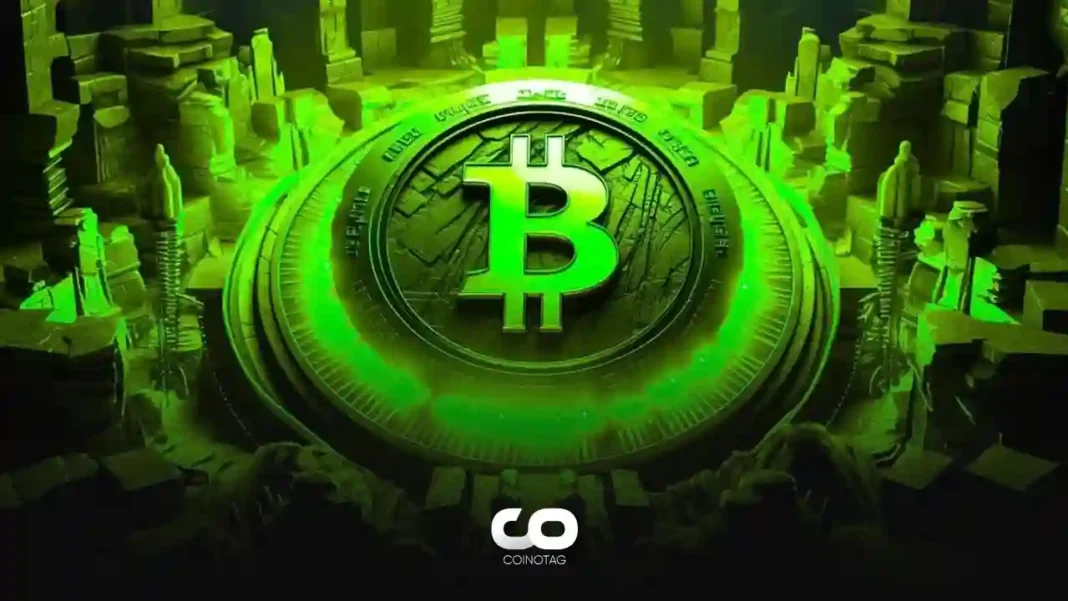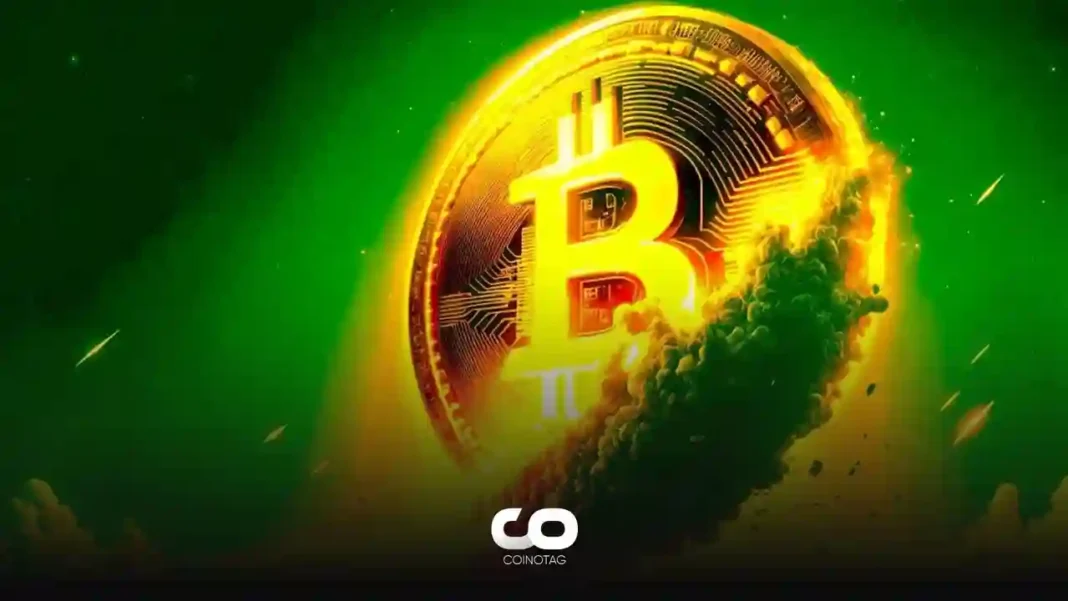| COINOTAG recommends • Exchange signup |
| 💹 Trade with pro tools |
| Fast execution, robust charts, clean risk controls. |
| 👉 Open account → |
| COINOTAG recommends • Exchange signup |
| 🚀 Smooth orders, clear control |
| Advanced order types and market depth in one view. |
| 👉 Create account → |
| COINOTAG recommends • Exchange signup |
| 📈 Clarity in volatile markets |
| Plan entries & exits, manage positions with discipline. |
| 👉 Sign up → |
| COINOTAG recommends • Exchange signup |
| ⚡ Speed, depth, reliability |
| Execute confidently when timing matters. |
| 👉 Open account → |
| COINOTAG recommends • Exchange signup |
| 🧭 A focused workflow for traders |
| Alerts, watchlists, and a repeatable process. |
| 👉 Get started → |
| COINOTAG recommends • Exchange signup |
| ✅ Data‑driven decisions |
| Focus on process—not noise. |
| 👉 Sign up → |
- As crypto market dynamics continue to evolve, a recent development has caught attention: the paper Bitcoin (BTC) trading volume overshadowing real BTC transactions.
- Bitcoin has a passionate decentralized fanbase determined to reshape the financial world.
- The direction of the spot market is heavily influenced by the futures market, signaling a delay in the introduction of spot ETFs.
The futures market in Bitcoin may be a factor delaying the launch of spot Bitcoin ETFs; Why are Bitcoin futures so important?
The Power of the Bitcoin Futures Market

As crypto market dynamics continue to evolve, a recent development has caught attention: the paper Bitcoin (BTC) trading volume overshadowing real BTC transactions. This dynamic involving Bitcoin futures contracts has deep implications for the cryptocurrency’s price. It also sheds light on the ongoing delays in introducing spot ETFs.
Historically, most gold reserves were held tightly in vaults, making them nearly untraceable. In contrast, Bitcoin has a passionate decentralized fanbase determined to reshape the financial world. However, the power dynamics between real BTC (spot market) and paper BTC (futures market) are causing fluctuations in the crypto community.
| COINOTAG recommends • Professional traders group |
| 💎 Join a professional trading community |
| Work with senior traders, research‑backed setups, and risk‑first frameworks. |
| 👉 Join the group → |
| COINOTAG recommends • Professional traders group |
| 📊 Transparent performance, real process |
| Spot strategies with documented months of triple‑digit runs during strong trends; futures plans use defined R:R and sizing. |
| 👉 Get access → |
| COINOTAG recommends • Professional traders group |
| 🧭 Research → Plan → Execute |
| Daily levels, watchlists, and post‑trade reviews to build consistency. |
| 👉 Join now → |
| COINOTAG recommends • Professional traders group |
| 🛡️ Risk comes first |
| Sizing methods, invalidation rules, and R‑multiples baked into every plan. |
| 👉 Start today → |
| COINOTAG recommends • Professional traders group |
| 🧠 Learn the “why” behind each trade |
| Live breakdowns, playbooks, and framework‑first education. |
| 👉 Join the group → |
| COINOTAG recommends • Professional traders group |
| 🚀 Insider • APEX • INNER CIRCLE |
| Choose the depth you need—tools, coaching, and member rooms. |
| 👉 Explore tiers → |
In the past, most gold reserves sat in virtually unmonitored vaults, while derivatives were easily delivered to the masses. As a result, the value of gold was often manipulated by these big players. But launching such derivatives on Bitcoin, which is fiercely protected by its community, is a different ballgame.
According to recent data from Glassnode, there are currently approximately 2.3 million BTC on exchanges. In a hypothetical scenario, if the public were to attempt to buy all of these assets and typically use 5x leverage to halt upward price momentum, only $12 billion worth of futures contracts would be needed.
| COINOTAG recommends • Exchange signup |
| 📈 Clear interface, precise orders |
| Sharp entries & exits with actionable alerts. |
| 👉 Create free account → |
| COINOTAG recommends • Exchange signup |
| 🧠 Smarter tools. Better decisions. |
| Depth analytics and risk features in one view. |
| 👉 Sign up → |
| COINOTAG recommends • Exchange signup |
| 🎯 Take control of entries & exits |
| Set alerts, define stops, execute consistently. |
| 👉 Open account → |
| COINOTAG recommends • Exchange signup |
| 🛠️ From idea to execution |
| Turn setups into plans with practical order types. |
| 👉 Join now → |
| COINOTAG recommends • Exchange signup |
| 📋 Trade your plan |
| Watchlists and routing that support focus. |
| 👉 Get started → |
| COINOTAG recommends • Exchange signup |
| 📊 Precision without the noise |
| Data‑first workflows for active traders. |
| 👉 Sign up → |
Why Are Spot ETFs Lagging?
This figure should be more meaningful in the context of the banking system’s $20 trillion M2 money supply. Therefore, there is an incentive to profit from selling BTC futures contracts to lower the price for an asset worth $12 billion.
Furthermore, the daily trading volume of futures markets has significantly increased, surpassing that of the spot market. Consequently, the direction of the spot market is heavily influenced by the futures market, signaling a delay in the introduction of spot ETFs.
| COINOTAG recommends • Traders club |
| ⚡ Futures with discipline |
| Defined R:R, pre‑set invalidation, execution checklists. |
| 👉 Join the club → |
| COINOTAG recommends • Traders club |
| 🎯 Spot strategies that compound |
| Momentum & accumulation frameworks managed with clear risk. |
| 👉 Get access → |
| COINOTAG recommends • Traders club |
| 🏛️ APEX tier for serious traders |
| Deep dives, analyst Q&A, and accountability sprints. |
| 👉 Explore APEX → |
| COINOTAG recommends • Traders club |
| 📈 Real‑time market structure |
| Key levels, liquidity zones, and actionable context. |
| 👉 Join now → |
| COINOTAG recommends • Traders club |
| 🔔 Smart alerts, not noise |
| Context‑rich notifications tied to plans and risk—never hype. |
| 👉 Get access → |
| COINOTAG recommends • Traders club |
| 🤝 Peer review & coaching |
| Hands‑on feedback that sharpens execution and risk control. |
| 👉 Join the club → |
Interestingly, some argue that futures contracts can affect the BTC spot price in both directions, but a decrease in liquid BTC would only push the price upwards. Significantly, as soon as futures markets began trading, Bitcoin started to resemble skyrocketing price increases.
The rivalry between the futures and spot markets could reshape the Bitcoin landscape. Understanding these mechanics is important for investors and enthusiasts as they navigate this complex territory in the crypto community.
| COINOTAG recommends • Members‑only research |
| 📌 Curated setups, clearly explained |
| Entry, invalidation, targets, and R:R defined before execution. |
| 👉 Get access → |
| COINOTAG recommends • Members‑only research |
| 🧠 Data‑led decision making |
| Technical + flow + context synthesized into actionable plans. |
| 👉 Join now → |
| COINOTAG recommends • Members‑only research |
| 🧱 Consistency over hype |
| Repeatable rules, realistic expectations, and a calmer mindset. |
| 👉 Get access → |
| COINOTAG recommends • Members‑only research |
| 🕒 Patience is an edge |
| Wait for confirmation and manage risk with checklists. |
| 👉 Join now → |
| COINOTAG recommends • Members‑only research |
| 💼 Professional mentorship |
| Guidance from seasoned traders and structured feedback loops. |
| 👉 Get access → |
| COINOTAG recommends • Members‑only research |
| 🧮 Track • Review • Improve |
| Documented PnL tracking and post‑mortems to accelerate learning. |
| 👉 Join now → |








